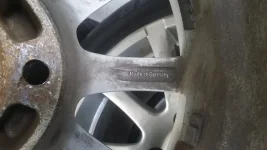It's a .7mm difference in bolt pattern, or .027" inch difference. It comes down to several factors.
First is the hub sizing. If the new rim's hub center is smaller than the car it is going on it will not fit correctly. everything from you can't even get it on the lugs, to you never can get it torqued down correctly where it won't fully seat on the new hub. See Islam's post above for what happens if you don't get it completely seated and torque down the lugs. They will bend and the rim will be out of center and balance, causing that wear in under 300 miles. If it is larger you will NEED hub centric spacer rings as the PAU's hubs are not designed for lug centering, but hub centering. That means if it's too big of a hub and you try to lug center it, you can end up .7mm or more(5 lug tolerance total) off center.
Second is the tolerances. The hub on your car may be drilled a little wide, and the rim you get be drilled a little narrow, making the offset too much and cause issues with them not aligning, or even going through without rubbing on the lug holes too much. You never want to clearance the lug holes with a grinder, if it's too tight you want a machinist to do it so he can keep the lugs centered to the rims bore.
Tolerances can come into play with lug nut hole size as well, some high end forged rims, like Ray's, have the lug hole exactly placed, with the lug exactly the correct size, with no way of opening the hole up without causing damage. Other manufactures can have oversized lug holes so it can fit.
Basically test fit the rims before having any tires mounted up if new, or if used, test fit them before buying them. Make sure you have an airgap around the lug holes. Make sure the hub center fits and it seats fully against the hub. If it's loose, get hub centering rings. If it's tight, don't run them.






